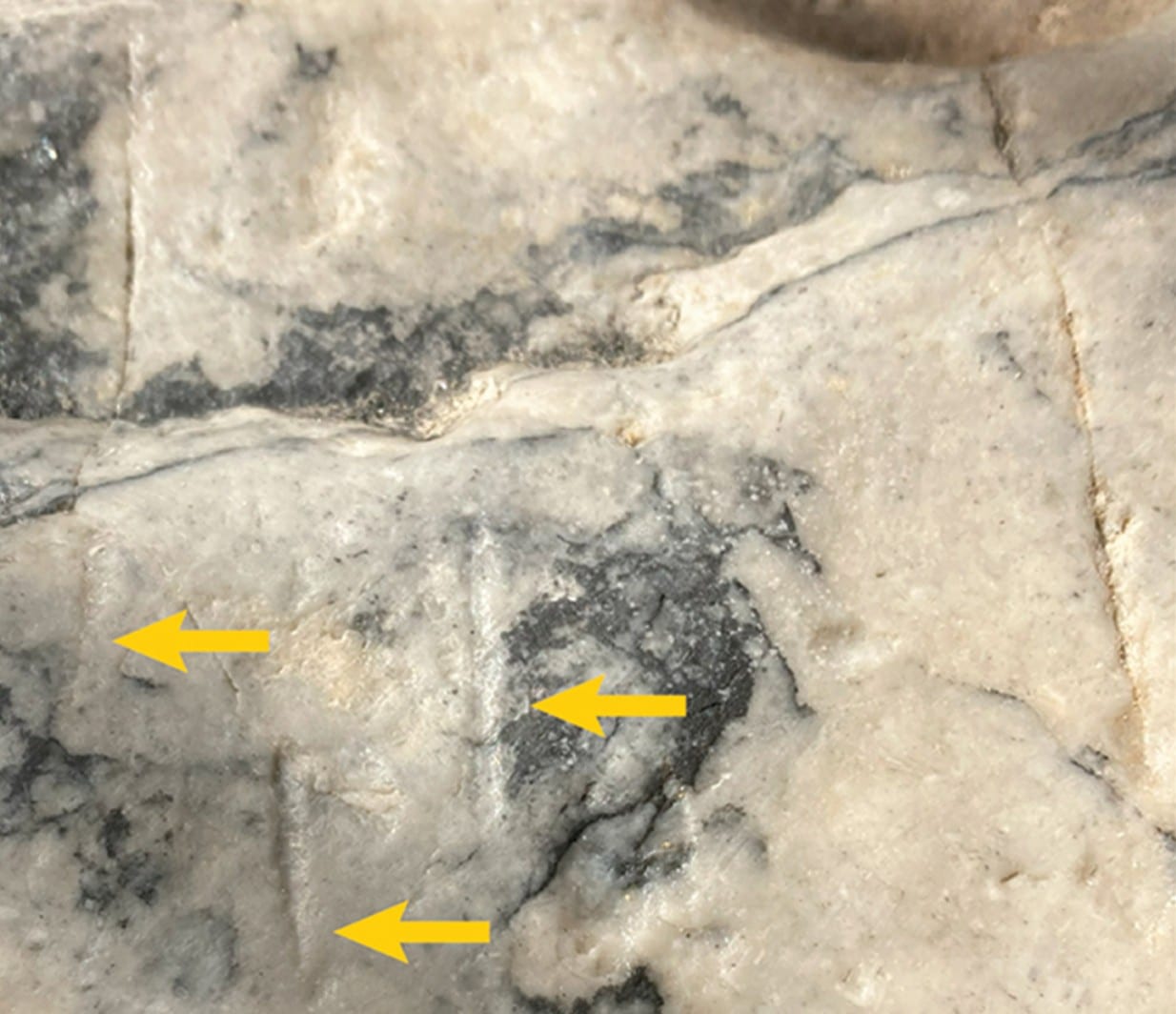

A 3,000-year-old limestone anchor carved with a Cypro-Minoan inscription, CM 102 Variant 7, has been uncovered from the seabed at Tel Dor, a coastal site on Israel’s Carmel Coast. The artifact, discovered in a shallow lagoon, provides new insights into ancient trade routes that linked Egypt, Cyprus, and the Levant.
Researchers say the inscribed anchor is part of the first known Iron Age cargo found in its original position in Israel. The find was published May 26 in the journal Antiquity, in a study led by Professor Assaf Yasur-Landau of the University of Haifa.
The Cypro-Minoan script is an undeciphered writing system that appeared on the island of Cyprus and among its trading partners during the late Bronze Age and early Iron Age (circa 1550–1050 BC). The name “Cypro-Minoan” was introduced by Arthur Evans in 1909 due to its visual resemblance to Linear A, the script used on Minoan Crete, which is believed to have influenced its development.
The anchor was recovered alongside early Iron Age storage jars arranged on a base of stones used to balance cargo aboard a ship. Several jars were marked with red painted symbols. One showed Egyptian-style markings, and another included signs similar to Cypriot script.

According to researchers, the combination of symbols indicates that the shipment contained items from both Egypt and Cyprus. This suggests a direct trade route linking the two regions through the port of Dor around the 11th century BCE, long before the area came under the control of ancient Israel.
Historical writings appear to confirm Dor’s importance in ancient trade. The Report of Wenamun, a well-known Egyptian narrative from the same period, describes a sea journey from Egypt to Dor, then on to Phoenicia and Cyprus. The path closely aligns with the cultural diversity observed in the recovered cargo.
In addition to the anchor and jars, the study details two other nearby underwater finds. One, called Cargo Dor L1, includes Phoenician-style jars and worn cooking bowls.
Researchers date this cargo to the late ninth or early eighth centuries BCE, when Dor was part of the Kingdom of Israel. Despite economic decline on land, the evidence shows that sea trade continued.

The third find, known as Dor L2, dates back to the seventh or sixth century BCE. It includes jars with basket-like handles, raw iron, and a wooden anchor reinforced with lead. Researchers believe this shipment reflects a later phase of revived trade under Assyrian and Babylonian influence.

The researchers say the layered discoveries point to centuries of shifting trade patterns and regional control. They plan to continue excavations west of the site, where sonar scans have detected wooden remains.
These could belong to an 11th-century BCE ship, offering a rare chance to connect the Cypro-Minoan-inscribed anchor to the vessel it once served.
